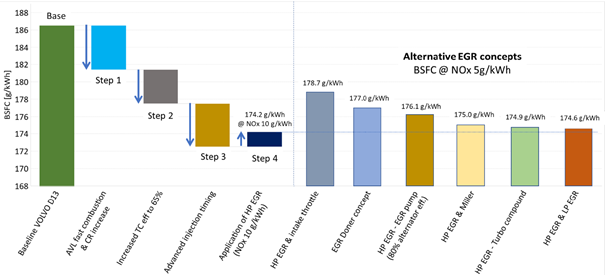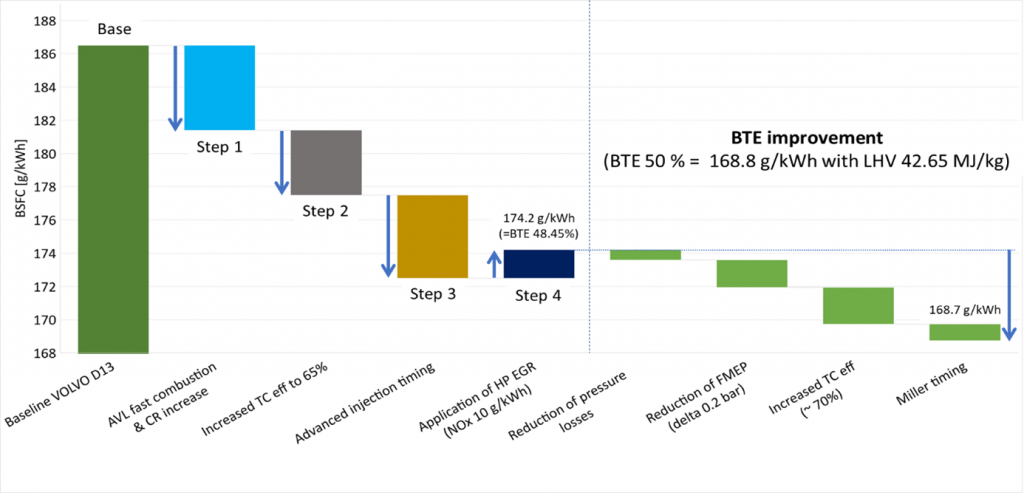Main work during the first 18 month: Combustion efficiency: Combustion system design, increase peak cylinder pressure (PCP), new piston bowl shape, optimized fuel injections, supported by 1D and 3D CFD simulations. Based on these results, Volvo procured 1st prototypes, and performed single cylinder tests.
Significant Results
A summary of achieved results is presented here, more details are found in the deliverable report “D3.1 Thermodynamic layout and combustion concept”.
Figure 1: Development progress
In figure 1 development progress is described. Focusing on the operating point 1200rpm / 21bar BMEP.
Starting from the left, with baseline VOLVO D13 engine without EGR, then 4 development steps are successively applied:
- a fast combustion concept with increased compression ratio (step 1),
- improved turbocharger performance (step 2),
- optimized combustion timing and high pressure EGR (step 3),
- the status at step 4 achieves 6,3% BSFC reduction compared to the baseline engine (186 → 174 g/kWh) at 10 g/kWh NOx emission (15% EGR).
However, these measures considerably rise the peak cylinder pressure (from 180 → 260 bar). It is emphasized that this investigation considered state-of-the-art mechanical characteristics (such as e.g. FMEP) and state-of-the-art component characteristics (such as turbocharger efficiency of 65%).
Based on the characteristics at step 4 various alternative EGR concepts were investigated with the target to reduce the NOx emission to 10 g/kWh (right side of Figure 2). This NOx level is the estimated engine-out target for ultra-low tailpipe emissions (< 100 mg/kWh). The most promising technologies in combination with HP EGR are Miller, turbo-compound and low pressure EGR. With these, the BSFC at step 4 can almost be held also at 5 g/kWh NOx.

